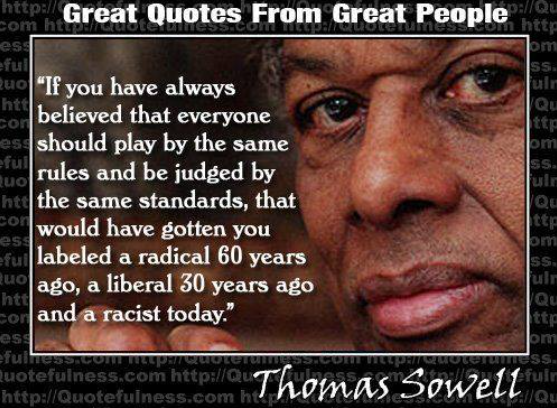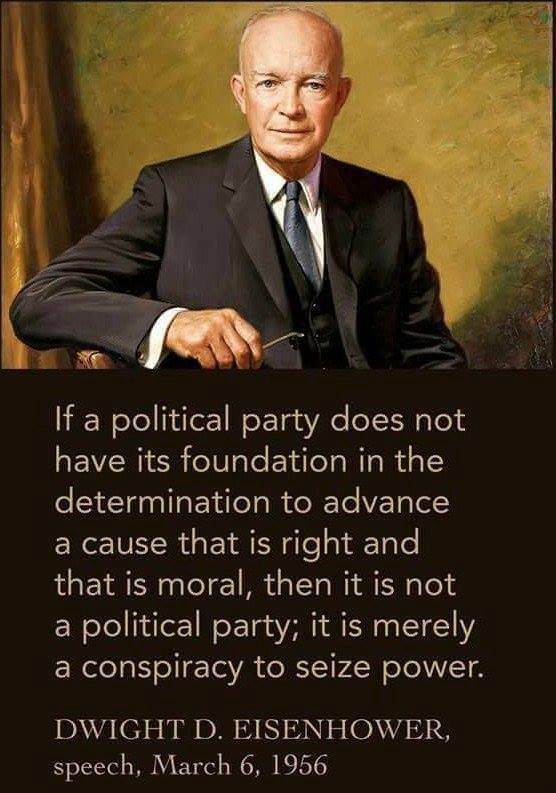04 October 2012
How Could One Replace a $5 Trillion Tax Revenue Reduction Due to Reduced Tax Rates?
Obama claimed that one cannot replace a loss of revenue from taxes of $5 trillion due to a reduction of tax rates such as Romney plans simply by closing loopholes. He is probably right, but what was not entirely adequately discussed is that Romney's understanding of the economy allows him to change many policies which will allow the economy to grow much more rapidly than it has or will in the future under Obama policies.
Democrats have a habit of making tax projections which ignore the benefit of growth. But, it is absolutely a critical component of rational tax policy. Tax revenues are a function of the tax rate, the amount the tax is applied to, and the frequency with which the tax rate is applied. Lowering the tax rate will bring in less money on a given transaction amount each time the tax is collected. However, lower rates allow greater growth of the economy, which means that the amount on which the tax is levied increases and the frequency of application in many cases also increases. The interaction of these three factors affecting the tax revenue is not nearly as simple as the common consideration of only the tax rate.
It was not made clear in the debate, but all of the numbers on tax revenue were apparently based on the next ten years of tax revenue. We have a $15 trillion GDP now. Under Obama, whose policies presently are allowing a government-claimed growth rate of only 1.6% so far this year which does not adequately adjust for price increases due to an understated government adjustment for the Consumer Price Index. The real real GDP growth is probably not even 1%, despite the fact that with a population growing at about 1% a year, a 1% growth rate in GDP is a give-me.
A combination of lower tax rates for business owners and for corporations will allow them to grow more and increase the GDP more. Lowering the rate for corporations, which is the opposite of what Obama has done despite his claim he wants to reduce corporate taxes, will allow multi-national corporations to bring home many profits they have made outside the US. Lower business tax rates will allow many companies to invest more in equipment, facilities, R&D, and training employees which will allow them to grow more rapidly. Allowing a much greater freedom to realize our huge fossil fuel resources will add considerable growth to our economy. Bringing down electricity costs by not forcing power companies to use expensive and unreliable wind, solar, and biomass energy will allow increased growth. Eliminating the requirement to use ethanol in gasoline would save a great deal of money and allow that to go to growth. Sensible relief from some of the excessive regulations of the EPA, the FDA, the SEC, the NRLB, and a host of other regulatory agencies will allow more growth. Repealing ObamaUncaringTax and Dodd-Frank will allow greater growth of the economy. The opportunities to improve GDP growth are many, but Obama has been and will continue to be on a stagnation path.
Let us look at the difference in the size of the economy over ten years at the Obama growth rate of 1% and at a reasonably attainable 4% growth rate which a President knowledgeable about the economy and business could manage. Here is the economy or GDP in trillions of dollars at the Obama growth rate:
2012, $15.00 trillion
2013, $15.15
2014, $15.3015
2015, $15.454515
2016, $15.609060
2017, $15.765151
2018, $15.922802
2019, $16.082030
2020, $16.242851
2021, $16.405279
2022, $16.569332
The cumulative 10 years of GDP to be taxed from 2013 through 2022 is then $158.50252 trillion. With a doable Romney growth rate of 4%, the growth of GDP looks like this:
2012, $15.00 trillion
2013, $15.60
2014, $16.224
2015, $16.87296
2016, $17.54788
2017, $18.249794
2018, $18.979785
2019, $19.738977
2020, $20.528536
2021, $21.349677
2022, $22.203664
The cumulative 10 years of GDP under the Romney growth rate of 4% is $187.29527 trillion. This is a cumulative $28.79275 advantage in a dynamic, growth economy. This is 1.9195 times our present GDP, from which the government has tax revenues of about $2.4686 trillion. If Romney were to reduce the effective tax rate by 20%, then the tax take on $15 billion would be $1.9749 trillion. So, the increased growth over 10 years at a 20% lower tax rate would add (1.9195)($1.9749 trillion) = $3.7908 trillion. This is most of the $5 trillion that Obama says Romney cannot make up by eliminating deductions. This does not even take into account the added tax revenues due to a higher frequency of application of some taxes. So, ignoring that additional tax revenue, reductions in tax deductions over ten years only need to recover $1.2092 trillion. That should be easy to do without changing the deductions of the middle class, as Romney claims he can do.
The difference in tax revenues for a healthy and growing economy compared to those of a stagnant economy such as we have now under Obama is huge. Given the future liabilities of Medicare and Social Security, not to mention paying interest on the national debt at a higher interest rate than the historically low rates now being paid, this much higher rate of growth is critical.
Democrats have a habit of making tax projections which ignore the benefit of growth. But, it is absolutely a critical component of rational tax policy. Tax revenues are a function of the tax rate, the amount the tax is applied to, and the frequency with which the tax rate is applied. Lowering the tax rate will bring in less money on a given transaction amount each time the tax is collected. However, lower rates allow greater growth of the economy, which means that the amount on which the tax is levied increases and the frequency of application in many cases also increases. The interaction of these three factors affecting the tax revenue is not nearly as simple as the common consideration of only the tax rate.
It was not made clear in the debate, but all of the numbers on tax revenue were apparently based on the next ten years of tax revenue. We have a $15 trillion GDP now. Under Obama, whose policies presently are allowing a government-claimed growth rate of only 1.6% so far this year which does not adequately adjust for price increases due to an understated government adjustment for the Consumer Price Index. The real real GDP growth is probably not even 1%, despite the fact that with a population growing at about 1% a year, a 1% growth rate in GDP is a give-me.
A combination of lower tax rates for business owners and for corporations will allow them to grow more and increase the GDP more. Lowering the rate for corporations, which is the opposite of what Obama has done despite his claim he wants to reduce corporate taxes, will allow multi-national corporations to bring home many profits they have made outside the US. Lower business tax rates will allow many companies to invest more in equipment, facilities, R&D, and training employees which will allow them to grow more rapidly. Allowing a much greater freedom to realize our huge fossil fuel resources will add considerable growth to our economy. Bringing down electricity costs by not forcing power companies to use expensive and unreliable wind, solar, and biomass energy will allow increased growth. Eliminating the requirement to use ethanol in gasoline would save a great deal of money and allow that to go to growth. Sensible relief from some of the excessive regulations of the EPA, the FDA, the SEC, the NRLB, and a host of other regulatory agencies will allow more growth. Repealing ObamaUncaringTax and Dodd-Frank will allow greater growth of the economy. The opportunities to improve GDP growth are many, but Obama has been and will continue to be on a stagnation path.
Let us look at the difference in the size of the economy over ten years at the Obama growth rate of 1% and at a reasonably attainable 4% growth rate which a President knowledgeable about the economy and business could manage. Here is the economy or GDP in trillions of dollars at the Obama growth rate:
2012, $15.00 trillion
2013, $15.15
2014, $15.3015
2015, $15.454515
2016, $15.609060
2017, $15.765151
2018, $15.922802
2019, $16.082030
2020, $16.242851
2021, $16.405279
2022, $16.569332
The cumulative 10 years of GDP to be taxed from 2013 through 2022 is then $158.50252 trillion. With a doable Romney growth rate of 4%, the growth of GDP looks like this:
2012, $15.00 trillion
2013, $15.60
2014, $16.224
2015, $16.87296
2016, $17.54788
2017, $18.249794
2018, $18.979785
2019, $19.738977
2020, $20.528536
2021, $21.349677
2022, $22.203664
The cumulative 10 years of GDP under the Romney growth rate of 4% is $187.29527 trillion. This is a cumulative $28.79275 advantage in a dynamic, growth economy. This is 1.9195 times our present GDP, from which the government has tax revenues of about $2.4686 trillion. If Romney were to reduce the effective tax rate by 20%, then the tax take on $15 billion would be $1.9749 trillion. So, the increased growth over 10 years at a 20% lower tax rate would add (1.9195)($1.9749 trillion) = $3.7908 trillion. This is most of the $5 trillion that Obama says Romney cannot make up by eliminating deductions. This does not even take into account the added tax revenues due to a higher frequency of application of some taxes. So, ignoring that additional tax revenue, reductions in tax deductions over ten years only need to recover $1.2092 trillion. That should be easy to do without changing the deductions of the middle class, as Romney claims he can do.
The difference in tax revenues for a healthy and growing economy compared to those of a stagnant economy such as we have now under Obama is huge. Given the future liabilities of Medicare and Social Security, not to mention paying interest on the national debt at a higher interest rate than the historically low rates now being paid, this much higher rate of growth is critical.
Subscribe to:
Post Comments (Atom)































































No comments:
Post a Comment